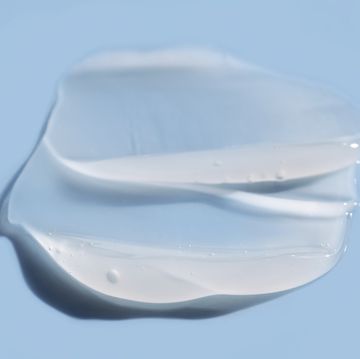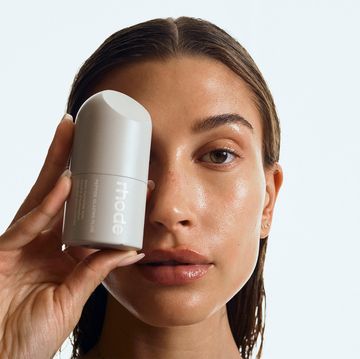Facials have always been shrouded in mystery. While you might have a general idea of ingredients used by your facialist, it’s often a flurry of products, tools, and steps—all performed while your eyes are shut. (And isn’t relinquishing control of your skin-care routine for an hour half the fun?) So, those that fancy trying out a facial at home might feel as if they’re peeking behind a curtain of sorts. To guide you on the path to an at-home glow, we asked two facial experts to demystify the tips, tricks, and techniques of the trade.
When Is It Time For A Facial?
Our skin is constantly communicating its wants and needs—you just have to listen. Celebrity facialist Candace Marino notes that different skin types communicate it’s time for a deep treatment in different ways. “For oily skin, you may experience clogged or dilated pores indicating the need for a facial, while a dry skin type will notice a rough texture, flakes, exaggerated lines and wrinkles—that’s your skin's way of visibly begging you for a facial,” says Marino. “Sensitive skin types may notice increased inflammation or a decreased lipid barrier, and acne-prone skin will be broken out and congested.” Another surefire sign: Consider a facial if your makeup isn’t applying or wearing well, she notes.
How To Prep Your Skin
Now’s the time to level up your cleansing routine, since starting with clean skin (and hands) is important. “Everyone's talking about double cleansing these days, and for years I've been preaching to my clients the benefits of triple cleansing,” Marino says. Marino’s three “cleaning phases” start by melting away makeup and other pollutants with oil cleanser, so “you're working on a fresh canvas.” Then comes the “True Cleanse”: “I like to use a gel-based or milky cleanse for this step,” she says. Finally, follow up with light exfoliation. “This cleanser I'll switch out almost nightly by bouncing back between enzymatic and chemical cleansers, based on how my skin presents,” continues Marino.
In What Order Do I Use The Products?
“You can do a great facial with the products you know already work well for you. Just throw in some extended facial massage and a mask to make it feel more decadent,” says Marino. To prevent formulas from pilling—and to increase absorption—stick to applying your products from lightest to thickest. “If you apply a heavier product or one with a higher molecular weight first, you're blocking the penetration of your thinner or lower molecular weight products, and are basically wasting it. As a rule of thumb, products will go on most-liquidy serum to gel-based serum, then onto thickest cream and, finally, oil,” she explains.
Pro Tip: Take a Bath
If you’re going to pamper yourself, you might as well go all the way. Marino suggests lighting candles, using a diffuser, and drawing a bath. “Many times, I prep my skin by cleansing it and then perform the entire facial in the bath. This definitely makes for a more relaxing experience, and also keeps you from going down the rabbit hole that is the magnifying mirror,” she says.
Hopping into a bath also happens to be perfect for a nighttime facial, Marino’s own personal preference. “This allows me to apply the active ingredients I want to go to work for me overnight, instead of needing the protection from SPF and then having to wash my face all over again,” the facialist explains.
From here, how to proceed depends on your skin type. Ahead, how to perform dry skin, acne-prone skin, and lifting facials—all in the comfort of your own home (or, you know, bathtub).
Facial for Dry Skin
“When working with dry skin, you need to be so gentle. Exfoliating and eliminating surface dullness is one goal, but it’s secondary to restoring the skin on deeper levels,” says beauty brand founder and celebrity aesthetician Tammy Fender. “It’s important to remember the glow we all seek comes not only from recent exfoliation, and the removal of surface cells, but from skin that is replenished at the deepest levels.”
Fender recommends “a double mask protocol” for dry skin, starting with a clay-based exfoliator and “following with a very robust treatment mask full of replenishing plant remedies that quench the skin on every level.” Then, slather on your favorite serum, a step Fender notes will protect post-facial skin, “locking in moisture.”
Don’t fret if your skin isn’t instantly rose-petal soft, either—and definitely don’t overdo exfoliation in an attempt to get there. “Buffing is never recommended for anyone with inflammatory processes of the skin, including acne, rosacea, and eczema. If your skin is red, hot, inflamed, or has broken capillaries do not buff,” explains Marino. “You're only increasing blood flow, feeding your inflammation, and worsening your skin condition.”
Instead, try an at-home version of Fender’s gommage technique to gently exfoliate: “Using fingertips, very light pressure, and small circular motions works really well. Using less pressure and investing the extra moment or two in light, repetitive exfoliation is more beneficial than fast, aggressive buffing, and will help maintain skin’s integrity,” explains Fender. “You want to remove dead surface cells, but without harming the underlying living layers.”
Facial for Acne-Prone Skin
Acne-prone skin enjoys a gentle hand, so try your best to resist the temptation to over-treat it. “Truly, acne diminishes with tenderness,” notes Fender. “My approach is to cleanse deeply, detoxifying and purifying the skin, while bolstering its natural defenses, soothing any inflammation, and supporting deep healing with nutrients. You want to avoid any products that can actually aggravate the condition with harsh astringent soaps, toners that contain isopropyl alcohol, and aggressive chemicals that can strip away the skin’s precious natural oils—its protective barrier.”
Similarly, don’t give in to the extraction itch when you’re on your own, since it can lead to more irritation and potential scarring. “Save them for your facialist—she'll be stoked to get them for you,” says Marino. “The only things that should ever be self-extracted should be soft and are removed with minimal pressure between cotton-wrapped fingertips. I like to rely on products to dissolve congestion at home, rather than teach people how to remove them.”
And yes, you can still perform a facial at home even if you’re currently in the middle of a breakout. “If you need to relieve painful irritation and the skin is highly inflamed, then a cool compress soaked with aloe vera juice or cucumber water does wonders. Just apply the cloth right to the skin,” says Fender. “On the other hand, if you have a pustule, that’s when you would want to use a warm water compress. You can lie down with a warm compress to help the skin release what needs to be naturally extracted.”
Facial for Lifting and Sculpting
You already have everything you need on hand to lift your face—pun intended. “Massage is your friend. You will notice a lifted and more youthful skin tone when incorporating daily facial massage,” explains Marino, who points out that increased circulation means more nutrients delivered to your cells. “I always start with a neck massage to release the tension we hold there that can impact how our face presents. Tense or sore necks impact the way we hold our jaw, mouth, eyes... releasing neck tension can instantly revitalize a tired face.”
For puffiness, Fender suggests a cool quartz roller, or a sterilized and smooth stone. “Then, with light pressure, roll across the face in upward and outward strokes. The important thing is to keep it all so very light,” she says. Refrigerated products can help skin unwind, as well. “It’s also so soothing to irritated, puffy skin to apply a compress of cold Roman Chamomile Tonic. Simply soak a cotton pad with the floral tonic that’s been cooled in the fridge and gently press it into the skin.”
Ultimately, you don't need to get facials every week if you take into account how day-to-day life affects your skin. “While we cannot avoid aging—it’s inevitable, and it can be beautiful—we can slow down premature aging. From a holistic perspective, it’s important to remember that stress hormones like cortisol can actually damage collagen. In protecting aging skin, we need to do what we can to soothe the body, and the skin, lowering the alarm system,” says Fender. “Getting great sleep and lessening potential irritants and toxins really helps. But so does just having fun with friends and laughing.”




















